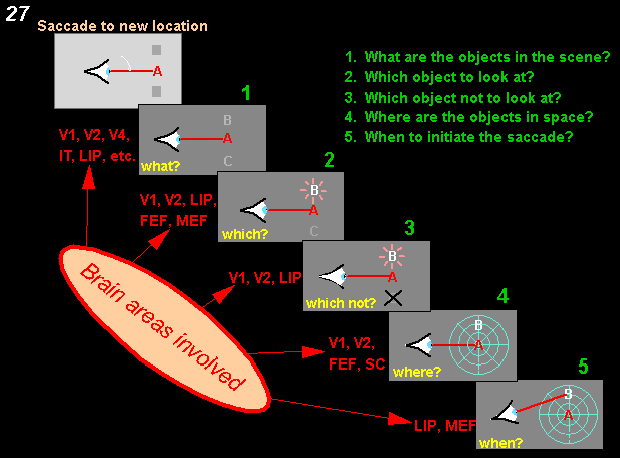The Neural
Control of Visually Guided Eye Movements
C. Cortical Mechanisms of Visually Guided Saccadic Eye Movements
Based on these observations we can now delineate
the computations that go on in the process of target selection with saccadic
eye movements. This is outlined in Figure 27.
Following each saccade to a new location, not only must the object in
central view be analyzed, but at the same time a decision has to be made
as to where to look next. We see 5 computations being carried out to accomplish
this: the first under #1, is to determine what the objects are
in the scene. This we know is carried out by many structures that include
V1, V2, V4, IT and LIP. Second, one target needs to be chosen
to be looked at. This decision, based on the facilitatory effects found,
appears to involve areas V1, V2, LIP, the FEF and the MEF.

Thirdly a decision needs also to be made as to
which targets not to look at. This clearly involves V1, V2 and
LIP as revealed by the noted interference effects which may well be a
product of inhibitory feedback circuits activated by the electrical stimulation.
Fourth, the spatial location of the targets needs to be computed
to generate the correct saccade; this probably involves V1,
V2, SC and the FEF in each of which receptive or motor fields are laid out
in nice topographic order. Lastly, #5, a decision needs to be made as
to when to initiate the saccade which appears to lie largely
in the domains of area LIP and MEF.
|
